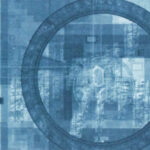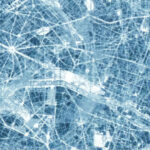“THE CENTRAL CITY and INNER CITY” by Stanza
Title:
- THE CENTRAL CITY and INNER CITY
Artist(s) and People Involved:
Exhibiting Artist(s):
Symposium:
Venue(s):
Artist Statement:
The central city and inner city are online internet specific art projects by stanza located at thecentralcity.co.uk. The “central” idea is to develop analogies for the organic identity of the city. The project includes generative audio and image environments built into three d spaces and user controlled 3d spaces. ‘The central city’, is an audio visual, interactive, internet art, experience. The city becomes an organic networks of grids and diagrams. The form and content of this work is a visual world of the city and its structure. Networks of information technology are contrasted with organic networks and city networks. The project fuses the sounds of specific places. The city becomes an organic network of grids and diagrams, juxtaposing urban sights and sounds. The city codes itself up into a growing patterns, based on algorithmic patterns. The digital city experience. This is a playfulness not far or dissociated from the playfulness of the situationist critique. ‘The central city’has become an amalgamation of ideas from art, architecture, design and urbanism. These online works represent spaces, they are idealised spaces. I don’t see ‘the central city’, as a simulation. I view the final evolution of the project as a experience, an online internet experience, which can be viewed inside the white cube of the box which is a corn outer. The framework, the grid, that contains this work is the computer and the internet. Images of maps redrawing and reprocessing themselves. This allows the city a perpetual evolution, no single similar path need be followed.
I wanted to develop analogies for the organic identity of the city as an urban community and make links with electronic networks and virtual communities. This organic interplay is contrasted with man made structures, as well as patterns and forms of urban design. The city itself is always changing; it is always in flux. Each aspect of city life seems to demonstrate specific characteristics, which can be developed into individual parts of the labyrinth, making up the images that will be used. The city has moved from metropolis to megalopolis to the ecumenopolis. The city is everywhere, with lifeless design spreading upwards and forming a conundrum of physical objects in space.







